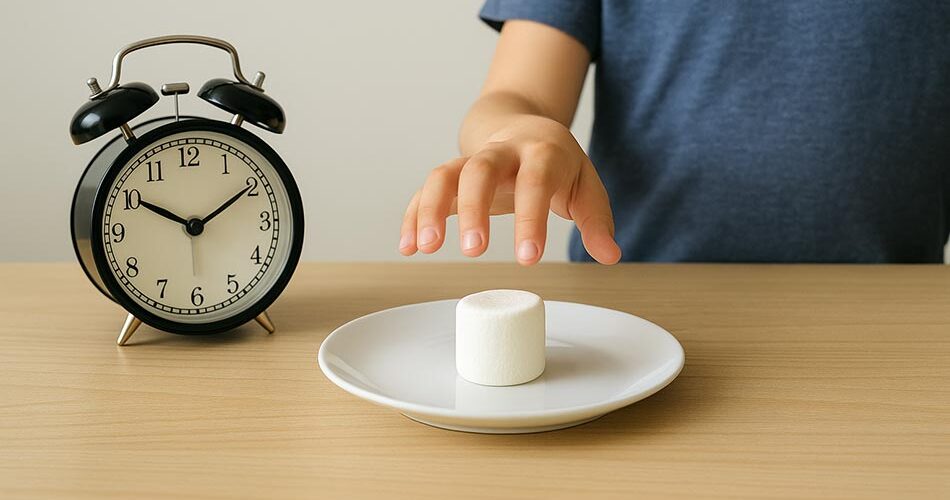In the early 1970s, a psychologist named Walter Mischel conducted one of the most famous experiments in the field of developmental psychology. Known widely as the Marshmallow Test, the study took place at Stanford University and involved hundreds of preschool-aged children. The premise was simple: a child was placed in a room with a single marshmallow (or sometimes a cookie or pretzel) on the table in front of them. They were told that they could eat the treat immediately, but if they waited for 15 minutes without eating it, they would receive a second one.
Though simple in its design, the marshmallow test yielded profound insights into the psychology of self-control and delayed gratification. Over the years, it has become a symbol of the broader question: does the ability to delay gratification in childhood predict future success?
The Original Experiment and Its Findings
Mischel and his colleagues observed the children as they struggled with temptation. Some covered their eyes, turned away, sang to themselves, or played with their hands. Others simply gave in and ate the marshmallow quickly. The key observation came years later when Mischel followed up with the same children into adolescence and adulthood. He found that those who had waited longer in the experiment tended to have better life outcomes, including higher SAT scores, healthier body mass indices (BMI), lower levels of substance abuse, and more positive social relationships.
The findings suggested that the ability to delay gratification — a key element of self-control — was an important predictor of life success. It highlighted the importance of “executive function” skills such as impulse control, planning, and emotional regulation.
Delayed Gratification and Brain Development
Follow-up studies using brain imaging have supported the original conclusions. For instance, a 2011 study by Casey et al. used functional MRI scans to examine the brains of adults who had participated in the original marshmallow test decades earlier. The researchers found that those who had successfully delayed gratification as children showed greater activity in the prefrontal cortex — the part of the brain involved in decision-making and self-control — and less activity in the ventral striatum, a region associated with reward.
This suggests that self-control has a neurological basis and that the ability to delay gratification is linked to how the brain processes temptation and reward.
Replications and Critiques
In recent years, however, the marshmallow test has undergone more scrutiny. A major 2018 replication study by researchers from New York University and the University of California, Irvine re-examined the findings using a more diverse and socioeconomically representative sample of over 900 children. While they confirmed that children who delayed gratification performed slightly better on academic tests later on, the effect was much smaller than originally reported. When factors like family background, early cognitive ability, and parenting style were controlled for, the predictive power of the marshmallow test diminished significantly.
This doesn’t mean that self-control is unimportant. Rather, it suggests that a child’s ability to delay gratification is shaped by a broader set of influences, including environment, trust in caregivers, and social context. For example, children from lower-income families may eat the marshmallow not because they lack self-control, but because past experiences have taught them not to trust that the promised second treat will come.
The Role of Environment and Trust
A fascinating 2013 study by Celeste Kidd at the University of Rochester illustrated this point. In the experiment, children were divided into two groups. One group was exposed to an unreliable environment (where promises of art supplies or stickers were not kept), while the other group was exposed to a reliable one. When given the marshmallow test, children in the reliable environment waited four times longer, on average, than those in the unreliable group. This showed that children’s decisions about delayed gratification are not just about impulse control, but also about expectations of reliability and trust.
Teaching Self-Control
The research has also sparked interest in whether self-control can be taught or improved. Studies suggest that it can. Interventions that help children practice planning, develop routines, and understand cause and effect can enhance self-regulation. For instance, programs like “Tools of the Mind” in early education settings have been shown to improve executive function and help children delay gratification more effectively.
Parents and educators can also support the development of self-control by creating consistent environments, modeling patience, and using age-appropriate challenges that encourage children to wait and reflect before acting.
Conclusion
While the marshmallow test may not be a crystal ball for future success, it remains a powerful metaphor for the importance of self-regulation in childhood development. The ability to delay gratification, while influenced by cognitive and neurological development, is also shaped profoundly by environment, trust, and social learning. Rather than viewing it as a fixed trait, self-control is better understood as a skill that can be nurtured through supportive relationships and stable environments.
Ultimately, helping children develop the capacity to wait — to think before acting and to trust in the future — may be one of the most valuable lessons we can offer them.







Add comment